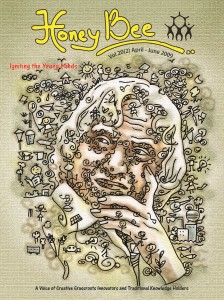Deification of Dr A P J Abdul Kalam legacy will be the greatest disservice to his memory. Having his statues on crossroads would not make him more venerated. We killed Gandhi, many times over by deifying him. I hope Dr Kalam will survive this tendency of making idols of people and forgetting their ideals.
Let me enumerate ten ways in which we can commemorate his memory through our actions, policies and institutions:
1) Giving children their due: We should build Navodaya Vidyalayas in every block and improve quality of school education in all the government and municipal schools in a time bound manner so that children whom he ( and we all) loved so much do not continue to suffer; 2) creating open source high quality Indian language content so that poor children who cannot afford tuitions can also compete with the more privileged and aspire for dreams that he taught them to; 3) strengthen science and technology institutions and budgets. Despite his strong belief in the ability of S&T to help in poverty alleviation and energy self-reliance, the budget for the purpose has been cut significantly in recent years instead of increasing it; 4) the dream of India becoming a developed country by 2020 is unlikely to be achieved, but can we do it by 2030? That will require reordering of priorities and revising the concept of antyodaya ( ‘developing the last first’ enunciated in 1977); 5) recast the MNGREA program which considers 250 million people as unskilled.’ As per his communication to then prime minister, though in vain, we should build upon the cultural, ecological, architectural, and numerous other skills and map the knowledge richness of our society as a part of work. How can a knowledge economy give only menial labour based jobs to such a large number of semi- or highly skilled ( though many may need augmentation) people whose skills may not have market or may have lost market; why can’t artists paint the walls of all primary schools, panchayat offices, in 6.50 lakh villages, teach children and so on; 5) we should develop smart cities but why not provide urban amenities in rural areas ( PURA) without bringing other ills of urbanization in the form of alienation, lesser respect for common properties and consignment of poor to slums with frequent movement to new sites farther and filthier; 6) shaming corrupt people publically (whenever students suggested such ideas in GRIIT class at IIMA, he liked them the most); 7) he died teaching in a class, can teachers in public schools and colleges, rededicate themselves to the students, redouble their efforts and try to pay attribute by being better teachers? 8) his humility and accessibility was writ large on his face, embedded in his actions and life spirit, may be that is something that should make our leaders take a cue from his life and shed a bit of arrogance and mingle more with people. He did so despite under Z level security; 9) he loved to push the frontiers of creative imagination of every one he met. Can we give a greater fillip to innovation agenda at all levels, and in all sectors, (certainly, the way government is trying at present may not be the best that India can do); and 10) can we relook at our systems of education, governance system and social, cultural economic and ecological connect between state, market and communities to develop a bipartisan agenda for national reconstruction.
I am aware that it will be difficult in the fragmented polity of the country to conceive that all parties will sit together with social change agents and scholars, practitioners and debate a new vision for the country. But how else we pay a genuine tribute to the memory of such an outstanding leader who commanded respect across regional, cultural, linguistic and national boundaries? We don’t need more idols of Dr Kalam, but more reflection on his ideals. May be…


We should be creating “modern villages” – villages that enhance the lives of their citizens – with jobs and livelihoods that allow them to work from the village instead of migrating to the cities…